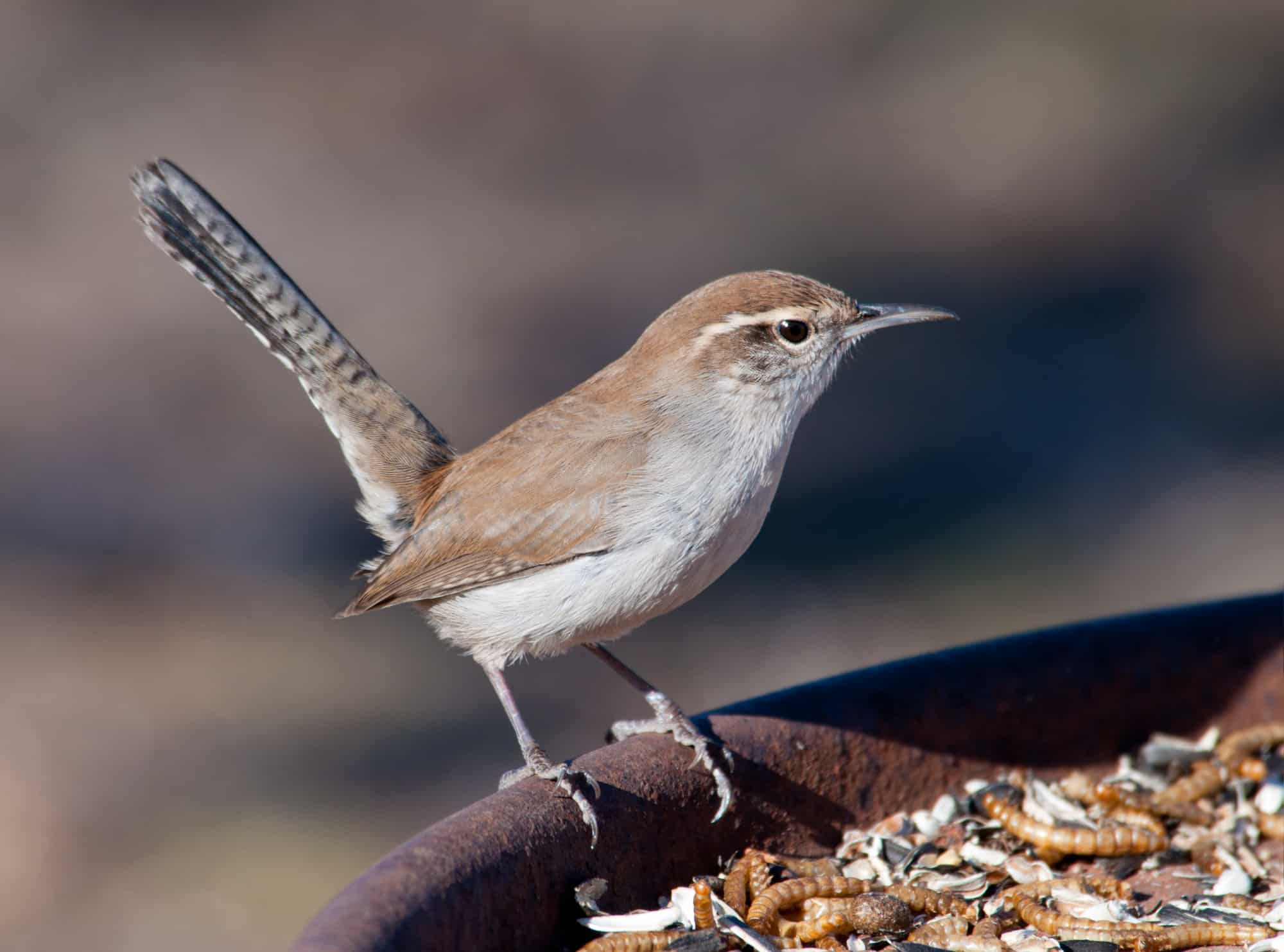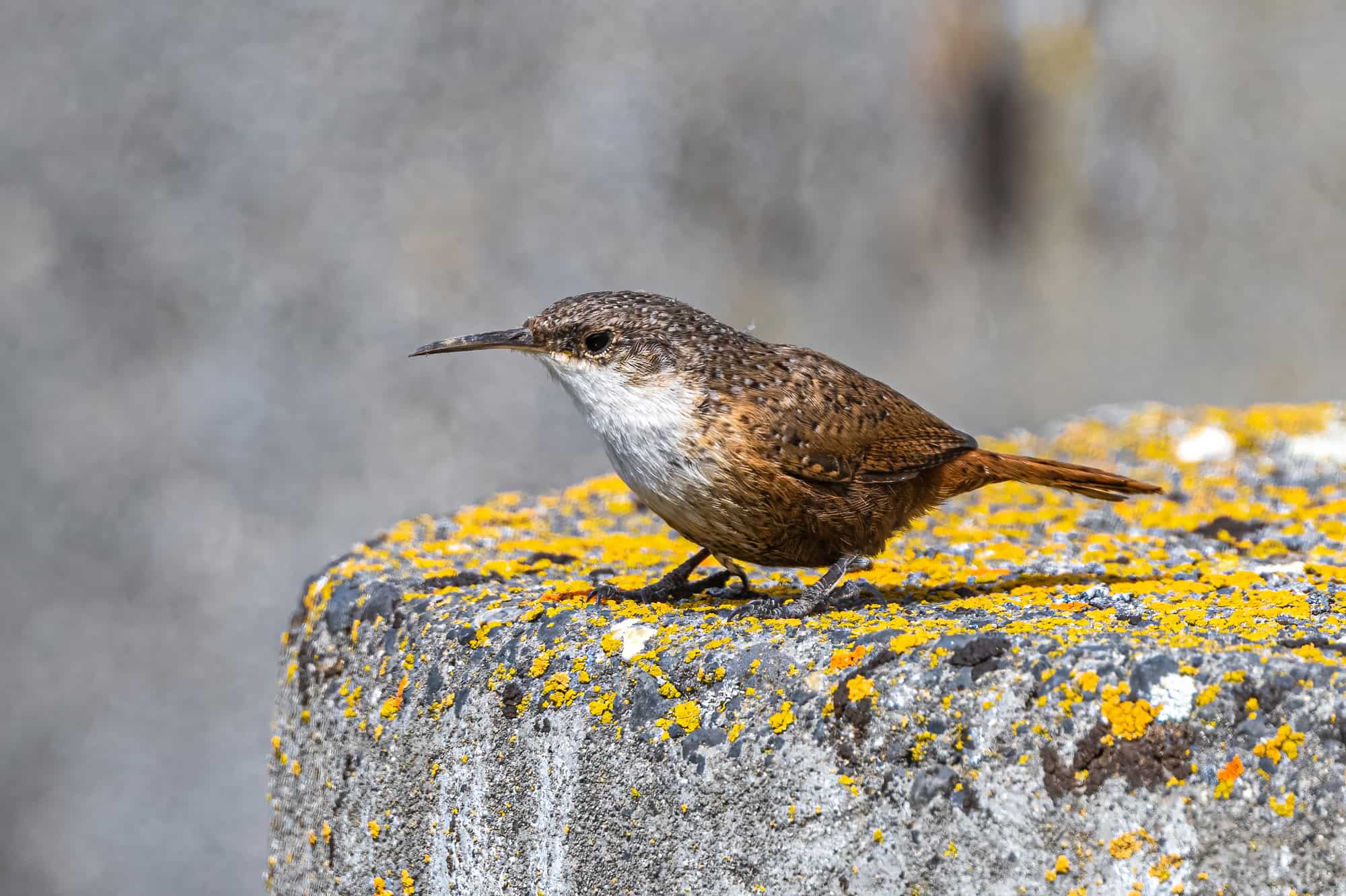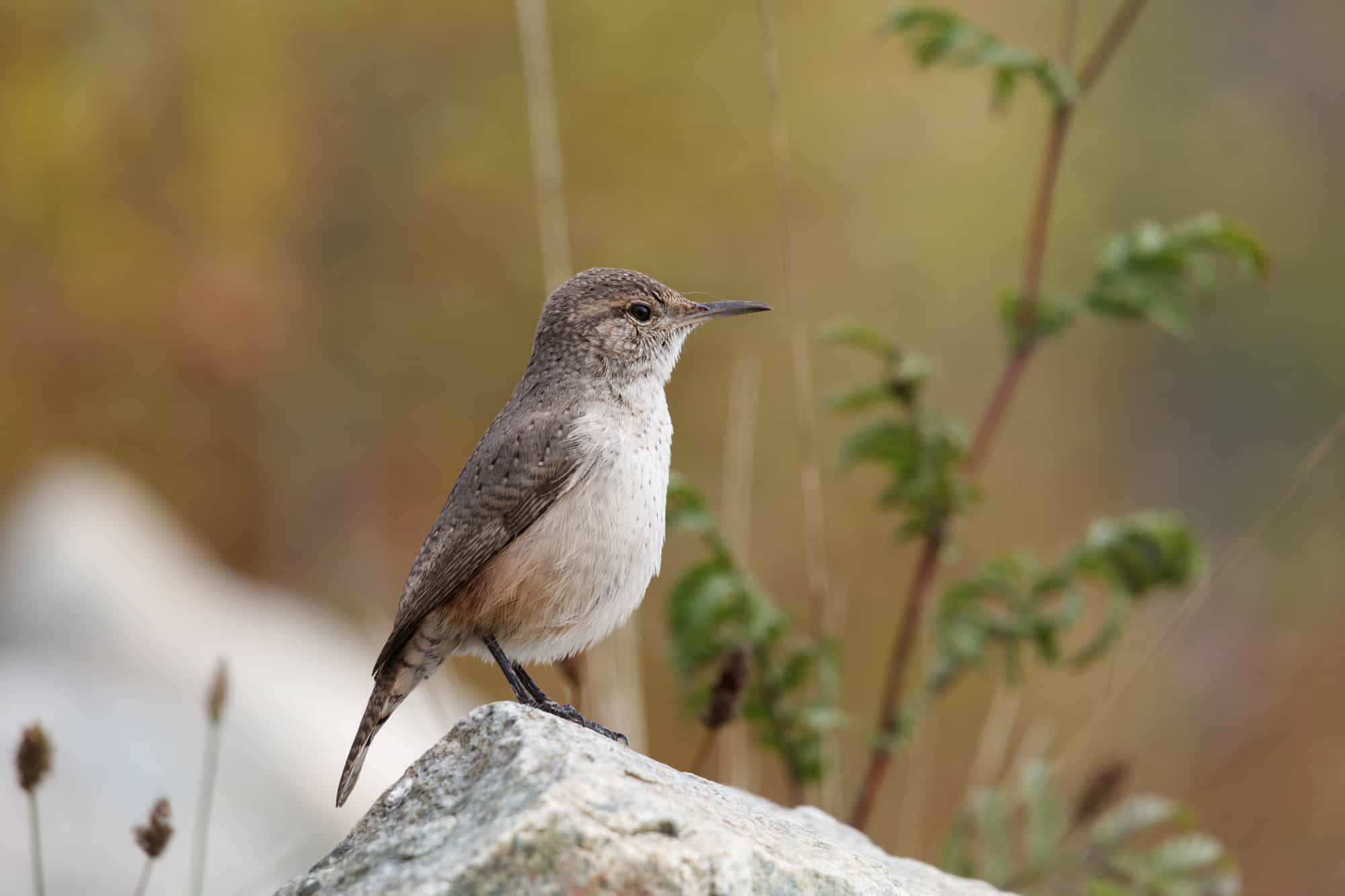A state where east meets west, Oklahoma has one of the most diverse landscapes of any state in America.
Home to four mountain ranges, high plains, low wetlands and more than 500 named rivers and creeks, The Sooner State offers countless opportunities for nature lovers to enjoy the rich and varied ecosystems here.
There have been more than 450 bird species spotted in Oklahoma, and 8 of them are wrens. Because of its central position on the map, both easterly species and westerly species of wren can be found here.
Wrens are some of the most endearing of all backyard birds, and you can encourage them to visit your home by offering them a scruffy corner of the garden, full of weeds and brush piles where they’ll love foraging for insects and invertebrates.
Some wren species will also take up residence in a suitable birdhouse, and it can be great fun watching these assertive critters build their nests and raise their young.
But which 8 wrens can be found in Oklahoma? Give yourself a big pat on the back if you can guess most of them before scrolling down!
Wrens in Oklahoma, Starting With the Most Commonly Seen
Carolina Wren

- Scientific Name: Thryothorus ludovicianus
- Length: 4.7-5.5 in (12-14 cm)
- Weight: 0.6-0.8 oz (18-22 g)
- Wingspan: 7.5 In (19cm)
Among the wren family, Carolina wrens are the queens of the Eastern States. Although Oklahoma lies in a very central position, Carolina wrens can be found throughout the state, except in the high mountains of the west.
With a wingspan of over 7 inches, Carolina wrens are one of the larger wrens. They have an attractive pale orange belly, a white chin, and long white eyebrows. They feed on insects, seeds, and occasionally lizards, too!
Carolina wrens are common backyard birds, and residents of Oklahoma can encourage them to visit by installing nest boxes. Carolina wrens are one of the few wrens that also visit platform feeders and tube bird feeders in the winter.
Reported by around 1 in 4 bird watchers in Oklahoma, Carolina wrens are the most frequently seen wren in the state. Because they don’t tend to migrate, they’re seen almost as often in winter as they are in summer.
Bewick’s Wren

- Scientific Name: Thryomanes bewickii
- Length: 5.1 in (13 cm)
- Weight: 0.3-0.4 oz (8-12 g)
- Wingspan: 7 in (17.8cm)
If the Carolina wren is the queen of the eastern states, then Bewick’s wren is the king of the west. With its central position, Oklahoma is one of the few states where Carolina wrens and Bewick’s wrens are both common birds.
With their long white eyebrows, pale gray belly, and cocked tail that reveals white corners, Bewick’s wren is fairly easy to identify. Their song varies enormously in different regions but is a curious mixture of noisy buzzes and tuneful trills.
Bewick’s wren’s favorite habitat is dry thickets, whether in woods, arid landscapes, or gardens. You can increase your chances of Bewick’s wren visiting your backyard by offering them a small nest box such as a gourd bird house.
Bewick’s wrens are fairly sedentary but do migrate short distances according to the different seasons. They’re seen by 4% of birdwatchers in Oklahoma during the winter, but by more than 7% during the warmer months.
House Wren

- Scientific Name: Troglodytes aedon
- Length: 4.3-5.1 in (11-13 cm)
- Weight: 0.3-0.4 oz (10-12 g)
- Wingspan: 5.9 in (15 cm)
Unlike our first two species, the house wren is a highly migratory species that mostly spends its winters in Central America and its summers at more northerly latitudes.
Oklahoma lies at the threshold of its summer and winter grounds – so while they only nest in the north of the state, a few will overwinter along the southern fringes, too. In the middle of the state, they can only be seen during the spring and fall migrations.
Although house wrens are small birds, they’re remarkably courageous and will often build their nests close to human habitation. Old mailboxes, coffee cans, or even coat pockets are among their favorite nest sites, but you can also provide them with a gourd birdhouse!
House wrens are vocal during the breeding season and males are not shy to belt out their fast series of rattles and trills to attract a mate or to declare their territory.
Marsh Wren

- Scientific Name: Cistothorus palustris
- Length: 3.9-5.5 in (10-14 cm)
- Weight: 0.3-0.5 oz (9-14 g)
- Wingspan: 5.9 in (15 cm)
Now for a very different type of wren. Whereas our first three species can all be seen in suburban backyards, you’ll need to take a dedicated trip to a swamp or wetland to observe the marsh wren.
Marsh wrens stick to their marshland habitats with such fidelity that you’re only likely to see them anywhere else during migration. Their typical abode is among cattails, tules, and reeds in standing water.
Marsh wrens are highly nomadic birds that only visit the southern half of Oklahoma during the winter months. In the spring, most of them fly to territories north of Kansas to breed.
To see marsh wrens in action, you’ll need a good pair of binoculars and a good deal of patience! These secretive birds blend in so seamlessly with their reedy surroundings that you might have to rely on their raucous song to locate them!
Winter Wren

- Scientific Name: Troglodytes hiemalis
- Length: 3.1-4.7 in (8-12 cm)
- Weight: 0.3-0.4 oz (8-12 g)
- Wingspan: 4.7-6.3 in (12-16 cm)
Next up, a tiny wren with a big personality. Along with its relative, the Pacific wren, the winter wren is the smallest wren in North America.
But its diminutive proportions only make the volume of its booming song all the more impressive! Winter wrens are masters of startling passersby when they leap out of dense cover and launch into their exuberant song.
True to its name, the winter wren is only seen during the colder months in the milder, eastern half of Oklahoma. Look out for them scrambling through undergrowth in damp, shady thickets, or overgrown backyards.
In the warmer months, winter wrens mostly fly to Canada for breeding – an impressive feat for such a small bird. Some pairs even make it as far as Newfoundland and Yukon!
Canyon Wren

- Scientific Name: Catherpes mexicanus
- Length: 4.5-6.1 in (11.4-15.4 cm)
- Weight: 0.3-0.7 oz (9.9-18.3 g)
- Wingspan: 7.1-7.9 in (18-20 cm)
Now another sedentary wren. The canyon wren is only locally common in the mountains and high plains in the western fringes of Oklahoma, where they can be seen year-round.
Unusual-looking birds, they have extremely long bills and white throats, on otherwise rufous bodies. These distinctive features make it difficult to mistake them for any other wren.
As well as being handsome birds, canyon wrens possess what must be one of the most soothing songs of any songbird in North America. Listen out for their cascading whistles reverberating over the canyon landscapes that they live in.
Canyon wrens use their long bill to retrieve insects and spiders from rock cavities and bizarrely have never been seen drinking water. Scientists conclude they must obtain enough fluids from their juicy prey!
Rock Wren

- Scientific Name: Salpinctes obsoletus
- Length: 4.9-5.9 in (12.5-15 cm)
- Weight: 0.5-0.6 oz (15-18 g)
- Wingspan: 8.7-9.4 in (22-24 cm)
Another wren of rocky habitats is the rock wren. They share a similar year-round range in the western mountains of Oklahoma as their cousin the Canyon wren.
This westerly species has a wingspan of 9 inches, making it the second largest wren in the USA after the cactus wren. Their long bill, long legs, and muted gray colors make them fairly easy to recognize.
During the breeding season, rock wrens exhibit the most extraordinary nesting behavior. Males move an impressive collection of pebbles in front of the nest site, which can weigh more than 3 lb in total!
It’s thought that the small stones provide flood protection and other benefits to the nest site. During nesting, listen out for the male rock wren’s buzzy trills as he bounces up and down upon a stone or boulder.
Sedge Wren

- Scientific Name: Cistothorus palustris
- Length: 3.9-5.5 in (10-14 cm)
- Weight: 0.3-0.5 oz (9-14 g)
- Wingspan: 5.9 in (15 cm)
The sedge wren is like a smaller and more timid version of the marsh wren but has a much smaller range. Whereas marsh wrens are seen in every contingent US state, sedge wrens mostly breed in the midwest, and overwinter in the southeast.
The southeastern corner of Oklahoma represents the frontier of the sedge wren’s winter range, so they’re pretty rare birds here – only marked down on around 1 in 300 birdwatchers’ reports in the colder months.
Sedge wrens are the second rarest wren in North America, and some ornithologists are concerned that their numbers are decreasing due to habitat loss. The preservation and restoration of native grasslands and marshlands will, therefore, prove crucial to their long-term success.
Whereas marsh wrens are only normally found in standing water, sedge wrens are happy in slightly drier habitats, including damp meadows. Still, you’ll need to sharpen up your birdwatching skills to observe these elusive, highly camouflaged wrens in Oklahoma!
Conclusion
Of the 11 wrens in North America, 8 of them can be seen in Oklahoma. The state’s diverse ecology offers a rich range of habitat niches for all kinds of these tiny, but mighty songbirds.
Wrens are among the smallest birds in Oklahoma, but what about the bigger, more colorful species? You can learn all about them in our guide to 27 of Oklahoma’s most iconic birds.

